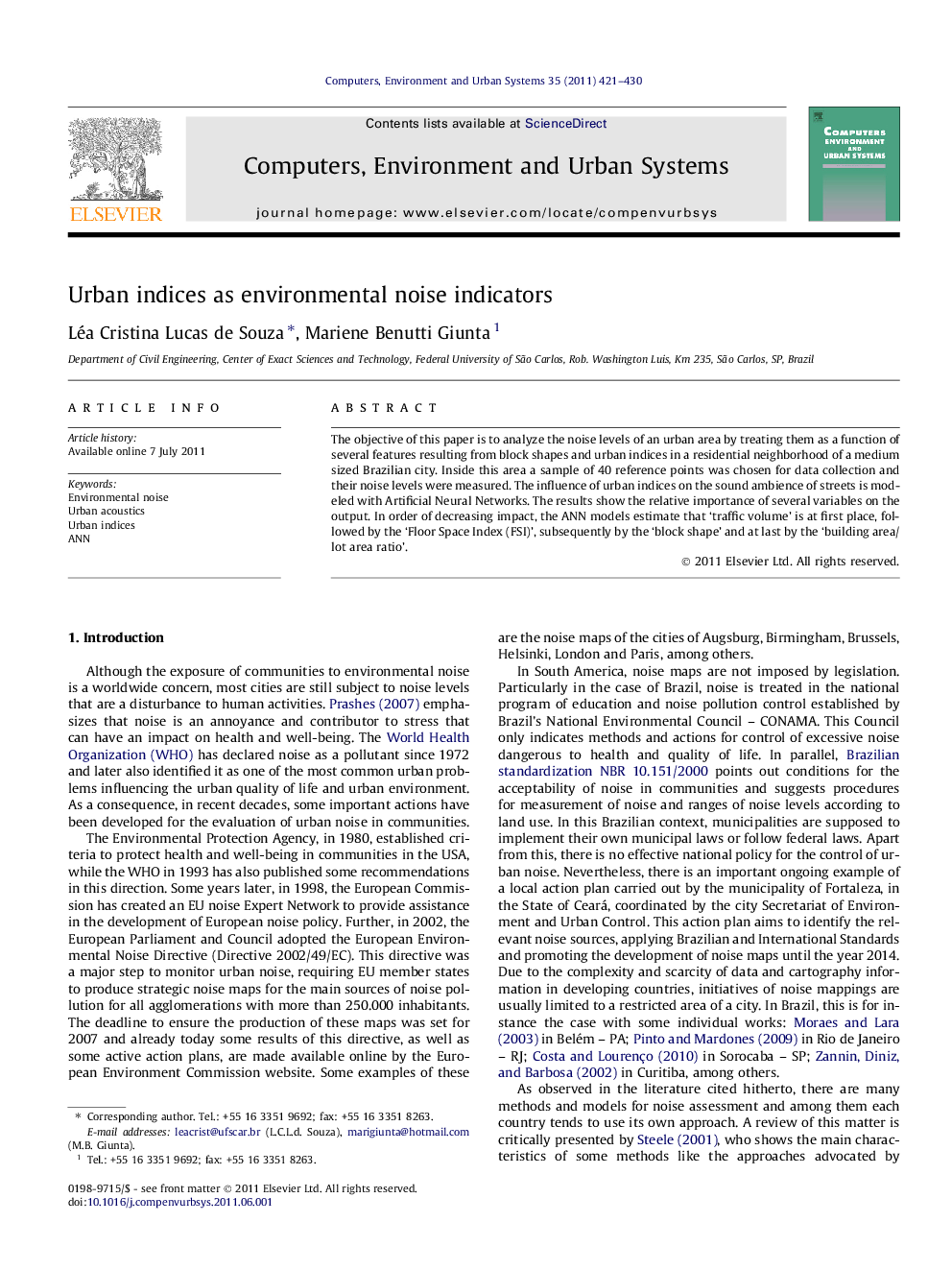| Article ID | Journal | Published Year | Pages | File Type |
|---|---|---|---|---|
| 506452 | Computers, Environment and Urban Systems | 2011 | 10 Pages |
The objective of this paper is to analyze the noise levels of an urban area by treating them as a function of several features resulting from block shapes and urban indices in a residential neighborhood of a medium sized Brazilian city. Inside this area a sample of 40 reference points was chosen for data collection and their noise levels were measured. The influence of urban indices on the sound ambience of streets is modeled with Artificial Neural Networks. The results show the relative importance of several variables on the output. In order of decreasing impact, the ANN models estimate that ‘traffic volume’ is at first place, followed by the ‘Floor Space Index (FSI)’, subsequently by the ‘block shape’ and at last by the ‘building area/lot area ratio’.
► We analyze noise levels as a function of urban features. ► We apply Artificial Neural Networks to model sound ambience of streets. ► Increasing Floor Space Index values will increase urban noise levels. ► Increasing building area/lot area ratios will also increase noise levels. ► Block geometry is as important as building area/lot area ratio on noise levels.
